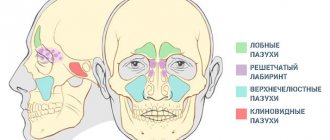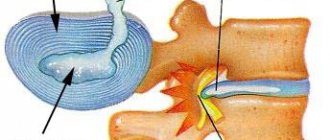Types of hepatitis
Currently, there are several types of viral hepatitis:
- hepatitis A. This is the most common type of virus, which has the most favorable picture of the course of the disease. Its symptoms and signs appear a week to two months after infection of the body. This form of hepatitis in rare cases becomes chronic, sometimes ending in complete self-healing of the body;
- hepatitis B. This is a dangerous form of hepatitis that is accompanied by severe symptoms. It requires mandatory treatment in a hospital setting using a full range of medications, adherence to a strict diet, and the cessation of bad habits. In 80% of cases, hepatitis B ends in a person being completely cured of the virus. It is possible to protect yourself from the disease through vaccination;
- hepatitis C. This is the most severe form of the disease, which is often accompanied by viral hepatitis of other groups. There is currently no effective vaccine against hepatitis C. The disease is difficult to treat and in every 7th infected person, it leads to chronic hepatitis with the subsequent occurrence of liver cirrhosis and cancer;
- hepatitis D. This is another form of viral hepatitis, which is similar in the course of the disease to group B hepatitis. The difference in viruses is the presence of a delta agent;
- hepatitis E. In terms of the totality of symptoms, this infection is similar to hepatitis form A. The disease can also be completely cured with timely consultation with specialists. If it develops into a chronic stage, it affects not only the liver, but also the kidneys. This form is dangerous for women in the last months of pregnancy.
Also, viral hepatitis differs in the form of the disease:
- acute hepatitis;
- chronic hepatitis.
Acute hepatitis most often manifests itself with obvious symptoms and signs of the disease; chronic disease is considered when the virus does not respond to treatment within 6 months.
City hospital of the resort city of Gelendzhik
Viral hepatitis is one of the most common human diseases. Today, several viruses are known to cause liver inflammation. The most common viruses are hepatitis A, B, C, D, E. The main diagnostic sign of any type of hepatitis is jaundice (yellowing of the skin and mucous membranes) and pain in the right hypochondrium. In addition, when making a diagnosis, data from biochemical tests of blood, urine and feces are taken into account. In false cases, they resort to liver biopsy, in which a small piece of tissue is taken for analysis.Viral hepatitis A
Of all viral hepatitis, HAV is the least “harmful”, although it should not be neglected or followed the doctor’s recommendations under any circumstances, since it can cause complications (diseases of the gallbladder and ducts). The hepatitis A virus only affects humans; it does not survive in animals. Therefore, the main source of infection is a sick person with any form of the disease.
The virus mainly enters the environment through feces; the main route of infection is fecal-oral, which is why HAV is called the “disease of dirty hands.” But infection can also occur through water, dishes, toys, personal hygiene items, and at work - even through tools used by the patient. Failure to comply with the most basic rules of hygiene opens a direct path for the virus to enter the body. The virus, entering a person through the mouth, is absorbed into the blood in the intestines and enters the liver. Here it begins to multiply intensively. An inflammatory reaction begins in the liver tissue, the outflow of bile is disrupted, and the size of the liver increases. Bile and bilirubin enter the bloodstream, causing the skin and mucous membranes to take on a characteristic icteric color.
Prevention.
The main prevention of hepatitis A disease must be carried out by ourselves. First of all, this is the observance of basic hygiene rules, which everyone seems to know about, but which, as conversations with patients and even sociological surveys show, not everyone follows.
- The most important rule is to wash your hands after using the toilet, before eating, after work, after going outside.
- Never eat unwashed vegetables and fruits, even from your favorite garden.
- When outdoors or in the country, never drink unboiled water.
- Keep an eye on your children, teach them to maintain personal hygiene from an early age, and do not allow small children to put toys in their mouths, especially those that others play with.
Viral hepatitis B
Hepatitis B is one of the most common infections in the world. Over 2 million people die from it every year. The insidiousness of the hepatitis B virus lies in the fact that although a person who has had it acquires long-term immunity, the infection develops again if a mutated (altered) strain of the virus enters his body. Among the various methods of transmission of the virus, two groups can be distinguished.
Artificial:
- in case of transfusion of infected blood or blood products;
- when using insufficiently sterilized instruments;
- when visiting manicure salons, acupuncture sessions, ear piercing, tattoos;
- through syringes during intravenous drug administration.
Natural:
- contact – when infected blood enters the body through normal contact, if there are wounds on the skin;
- sexual;
- vertical - from mother to fetus.
The hepatitis B virus is integrated into the genetic apparatus of the liver cell. This causes significant difficulties in the treatment of hepatitis B. The hepatitis B virus remains in the liver for a long time and often becomes chronic.
Prevention.
Health care workers bear the greatest responsibility in preventing HBV disease. They must take all precautions during any procedure where they come into contact with blood so as not to put themselves or their patients at risk. All tools and equipment must be thoroughly sterilized, and workplace safety rules are strictly observed.
Promiscuous sexual intercourse and failure to comply with basic safety rules also occupy a significant place among the causes of HBV disease. Vaccination plays an important role in preventing the spread of hepatitis B. In our country, vaccination against hepatitis B is included in the national calendar of preventive vaccinations.
Viral hepatitis D
The causative agent of HDV is able to multiply in the human body only in the presence of the hepatitis B virus, integrating into its upper shell. He needs this to synthesize his own shell.
Since the D virus itself is not able to reproduce, the prevalence of HDV is associated with the prevalence of hepatitis B. The mechanisms and routes of transmission are the same as for the B virus. Infection can occur either separately with the D virus (a person already infected with the B virus receives an additional “gift”), and both viruses at once. The largest number of infected people were found among drug addicts and hemophiliacs. There is also information about a high risk of infection through sexual contact. Immunity after HDV infection is unstable, and re-infection can occur.
Almost all the symptoms are the same as for hepatitis B disease alone, but more pronounced and severe - the disease develops “lightning fast” and acutely. Delta infection much more often leads to the progression of the disease into a chronic form and further leads to the development of cirrhosis or hepatic encephalopathy.
Prevention.
Treatment and prevention of hepatitis D are the same as those used for hepatitis B. The vaccine intended to prevent hepatitis B also protects against hepatitis D.
Viral hepatitis C
The main source of infection is patients with acute or chronic forms of hepatitis C, as well as virus carriers. Transmission of the pathogen occurs through blood, less often through other body fluids (urine, saliva, semen), so infection through sexual contact occurs rarely, although in risk groups, among people who are promiscuous, the incidence rate is high. Up to 50-70% of cases of infection occur through intravenous drug use. Many virus carriers, without getting sick themselves, serve as a source of infection for others. In addition, many forms of chronic hepatitis are most likely directly related to the C virus.
The hepatitis C virus penetrates through the blood not only into liver cells, but also into other organs and tissues, where it begins to multiply. And the main role in the development of the disease is played, as far as is known today, not so much by damage to liver cells (although it can be significant), but by the body’s autoimmune reactions. The mechanism of damage to the liver cell is the same as with hepatitis B. Acute hepatitis C is very difficult to diagnose because it can be practically asymptomatic.
Acute hepatitis C can further develop in three ways:
- recovery, which occurs in approximately 20% of patients after 6-8 months;
- transformation of an infected person into a virus carrier (that is, the person himself is not sick, but serves as a source of infection for other people);
- development of chronic hepatitis, recorded in 60-70% of those who have had acute hepatitis.
Chronic hepatitis is the main form of viral hepatitis C. This is not a complication, but a form, and the reasons why this happens are not yet fully understood. The transition from acute to chronic hepatitis C occurs gradually. Over the course of several years, the condition of the liver tissue gradually deteriorates. During this period, which sometimes lasts 15-20 years, patients most often do not consider themselves sick.
Prevention.
The basic measures for preventing hepatitis C are the same as for HBV. Donors who are found to have antibodies to hepatitis C virus antigens cannot participate in blood donation for life. There is no vaccine to prevent hepatitis C virus, and the prospects for its development are very uncertain.
Viral hepatitis E
HEV is similar in general features to hepatitis A, but differs in its effects on the liver and symptoms. Infection occurs through consumption of water and food that contains the hepatitis E virus. Transmission of the virus from person to person is less common and is transmitted mainly through fecal contamination of household items, such as kitchen utensils. The liver, most likely (the mechanism of action of the virus has not yet been fully studied), is the only “target” of HEV, therefore the disease is characterized mainly by disruption of the liver and intoxication of the body.
Prevention.
Particularly important are general hygienic and sanitary measures used for the prevention of other intestinal infections. This is, first of all, the protection of water supply sources from pollution, constant chlorination of drinking water, sanitary control in public catering establishments, sanitary education of the population, etc. Research has now begun aimed at creating a vaccine using genetic engineering.
GBUZ "Center for Medical Prevention" of the Ministry of Health of the Krasnodar Territory
Causes of hepatitis
The main causes of hepatitis:
- viral infection;
- alcohol addiction;
- drug intoxication.
In more rare cases, the hepatitis virus is caused by other infections, for example, cytomegalovirus, herpes, etc.
Hepatitis groups A and E most often enter the body through the gastrointestinal tract. This is facilitated by:
- fruits and vegetables that have not been properly processed;
- unwashed hands;
- contaminated water or food.
Viruses of other groups enter the human body primarily through the blood. The disease is transmitted:
- during childbirth from mother to child;
- during sexual intercourse;
- during transfusion of infected blood and its products;
- when using non-sterile syringes and medical instruments;
- when using unsterile needles in tattoo parlors and untreated manicure instruments.
There are also autoimmune causes of hepatitis of different groups, but what provokes such a reaction in the body is unknown to scientists today. In the case of an autoimmune reaction, the body produces antibodies to the cells and tissues of the liver. This provokes the development of the disease and aggravates its further course.
Viral hepatitis: symptoms and signs of the disease
Symptoms and signs of acute hepatitis
The most obvious manifestations of hepatitis are jaundice of the skin, eyeballs and mucous membrane of the upper palate. In rare cases, the skin, as well as the sclera, may not change its color, but jaundice always affects the soft palate.
In addition, the patient may observe:
- increased body temperature observed over several weeks;
- headache;
- general fatigue and fatigue;
- decreased appetite;
- nausea, vomiting and diarrhea;
- the appearance of an unpleasant bitter taste in the mouth;
- pain in the right hypochondrium;
- spider veins on the skin;
- frequent nosebleeds, easy formation of hematomas;
- darkening of urine and discoloration of stool.
Hepatitis: signs of chronic form
During the transition of hepatitis to a chronic form, the symptoms remain the same, but their severity decreases. In addition there are:
- nausea;
- loss of appetite;
- periodic vomiting and diarrhea;
- general fatigue and decreased performance;
- gradual weight loss.
In the absence of proper treatment for hepatitis of different groups, these symptoms are accompanied by signs of cancer and cirrhosis of the liver.
Hepatitis: diagnostic methods
As a rule, hepatitis is diagnosed when a patient visits a doctor with complaints or during preventive examinations.
As part of a routine appointment with a therapist or gastroenterologist, a specialist will palpate the liver area. With hepatitis, it always increases in size.
In addition to questioning, history taking and palpation, materials are taken for laboratory tests.
The standard framework for diagnosing hepatitis involves:
- clinical analysis of blood, urine and feces;
- biochemical blood test
- PCR diagnostics of viral hepatitis
- Fibrotest and Fibromax (determining the degree of liver fibrosis).
The research determines whether the virus belongs to one of the hepatitis groups and its quantity (viral load).
An ultrasound examination of the abdominal organs is also mandatory.
In some cases it may be necessary:
- examination of the hepatic ducts and biliary tract (cholegraphy);
- needle biopsy of the liver.
What is the liver?
The liver is the largest organ
in the body, weighing about 1.3 kg. It consists of four lobes of different sizes and shapes and is located in the abdominal cavity on the right below the diaphragm. The human liver has many functions: - Detoxification - filtering harmful substances from the blood, such as alcohol. — Accumulation and preservation of nutrients. For example, vitamins A, D, and B12. - Synthesis of amino acids - the “building blocks” of proteins. - Production of digestive enzymes - bile. — Maintaining optimal blood sugar levels. -Produces 80 percent of the body's cholesterol. — Glycogen storage and conversion of glucose into glycogen. - Production of hormones.
Hepatitis: treatment courses
Treatment of acute forms
Treatment of acute hepatitis should be carried out immediately. The earlier it is started, the greater the likelihood of complete recovery.
Treatment of any form of hepatitis in the acute period is always carried out in a hospital setting. The main functions of drug treatment:
- detoxification of the body;
- fight against the virus that provoked the development of the disease;
- relief or complete suppression of inflammatory processes in the liver.
The medications are prescribed both intravenously and orally. Also, patients with hepatitis are prescribed vitamin complexes, which necessarily include: calcium, potassium, manganese. At the discretion of the doctor, oxygen therapy may be included in the treatment courses for hepatitis of different groups.
During treatment, it is mandatory to follow diet No. 5A (to reduce the load on the liver).
For patients with hepatitis, the use of alcohol and medications that have a toxic effect on the liver is strictly contraindicated.
Treatment of viral forms of hepatitis involves hospitalization of the patient in the infectious diseases department; in case of a toxic form of hepatitis, treatment is carried out in the toxicology department.
Treatment of chronic hepatitis
Chronic hepatitis involves constant monitoring of the body's condition throughout life. To do this, it is necessary to regularly perform a number of laboratory and instrumental diagnostic procedures.
Treatment of hepatitis of different groups is carried out in courses with mandatory breaks. When medications are not taken, the patient is prescribed mandatory adherence to diet No. 5. During periods of exacerbation of hepatitis, diet No. 5A is prescribed.
Chronic hepatitis, depending on the causes of the disease, involves taking the following medications:
- hepatoprotectors that have a beneficial effect on liver cells - hepatocytes;
- vitamin complexes;
- antiviral drugs;
- immunosuppressants and corticosteroids, in the case of autoimmune hepatitis.
It is mandatory to carry out a detoxification procedure for the body.
The patient should give up alcohol and tobacco smoking, which only worsen the condition of the liver tissue. Physical activity during the period of normalization of the condition is allowed, but moderate, so as not to cause overwork of the body.
If all recommendations are followed, the patient can live a long, fulfilling life.
In the practice of treating hepatitis of various forms, cases when the disease develops rapidly (from the moment of infection and the onset of symptoms to global liver damage) are quite rare.
Hepatitis: disease prevention
Compliance with preventive measures can partially protect the body from hepatitis, as well as prevent periods of its exacerbation in those who are already sick. Disease prevention includes:
- compliance with hygiene rules, washing hands with soap before each meal;
- proper processing of food products;
- giving up alcohol and smoking.
Preventive measures also include vaccination. Today, during the first years of life, children are required to be vaccinated against hepatitis B. This helps protect the body from liver damage by this virus.
The most important
The most common forms of hepatitis are A, B and C. The first form is transmitted through food and water, hepatitis B is mainly transmitted through sexual contact, and hepatitis C is transmitted through blood.
You can protect yourself from hepatitis by following basic rules of personal hygiene, getting vaccinated, not using drugs and protecting yourself during sexual contact. Illustration: Coast Guard Tags:
- Hygiene
- Liver
- Alcohol
- Safety
- Viruses
To leave a comment you must be an authorized user










